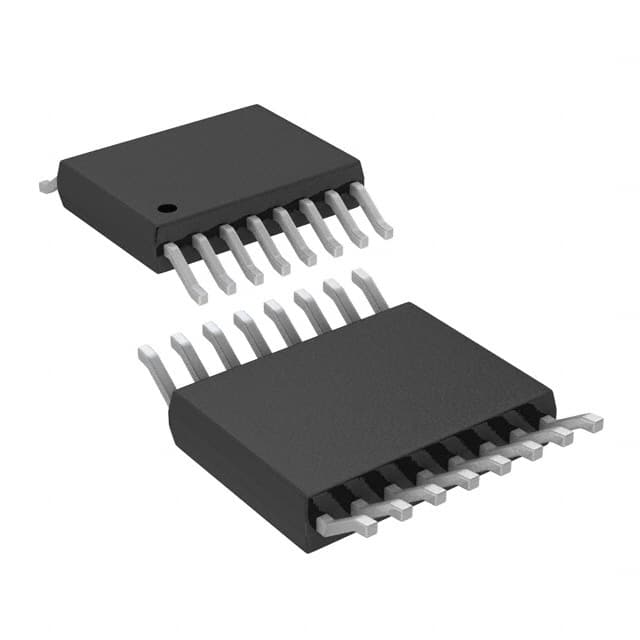LTC4355CMS#PBF
Product Overview
Category: Integrated Circuits (ICs)
Use: Power Management IC
Characteristics: - Ideal diode controller - Low quiescent current - Wide input voltage range - Overvoltage protection - Reverse current blocking - Adjustable undervoltage lockout - Fault flag output - Small package size
Package: 10-MSOP (0.118", 3.00mm Width)
Essence: The LTC4355CMS#PBF is an integrated circuit that functions as an ideal diode controller. It provides a low quiescent current solution for power management applications.
Packaging/Quantity: The LTC4355CMS#PBF is available in a 10-MSOP package and is typically sold in reels of 2500 units.
Specifications
- Input Voltage Range: 4V to 80V
- Quiescent Current: 50µA
- Operating Temperature Range: -40°C to 85°C
- Fault Flag Threshold: 1.2V
- Reverse Current: 20mA
- Overvoltage Protection Threshold: 100mV
Pin Configuration
The LTC4355CMS#PBF has the following pin configuration:
```
| | --| EN/UVLO 1 |-- --| GATE 2 |-- --| VIN 3 |-- --| FLT 4 |-- --| GND 5 |-- --| GND 6 |-- --| GND 7 |-- --| GND 8 |-- --| VOUT 9 |-- --| VOUT 10 |-- |___________| ```
Functional Features
- Ideal Diode Controller: The LTC4355CMS#PBF acts as an ideal diode, allowing current flow in one direction while blocking reverse current.
- Low Quiescent Current: With a quiescent current of only 50µA, the LTC4355CMS#PBF minimizes power consumption.
- Wide Input Voltage Range: It can handle input voltages ranging from 4V to 80V, making it suitable for various applications.
- Overvoltage Protection: The LTC4355CMS#PBF provides overvoltage protection by limiting the output voltage to a safe level.
- Adjustable Undervoltage Lockout: The undervoltage lockout threshold can be adjusted to suit specific requirements.
- Fault Flag Output: A fault flag output pin indicates when a fault condition occurs.
- Small Package Size: The 10-MSOP package offers a compact form factor, saving board space.
Advantages and Disadvantages
Advantages: - Efficient ideal diode functionality - Low power consumption - Wide input voltage range - Overvoltage protection - Adjustable undervoltage lockout
Disadvantages: - Limited to a maximum reverse current of 20mA - Requires external components for complete power management solution
Working Principles
The LTC4355CMS#PBF works by controlling the gate voltage of an external N-channel MOSFET to emulate an ideal diode. When the input voltage is higher than the output voltage, the MOSFET is turned on, allowing current flow. In the reverse direction, the MOSFET is turned off, blocking any reverse current. The device also incorporates overvoltage protection and adjustable undervoltage lockout features to ensure safe operation.
Detailed Application Field Plans
The LTC4355CMS#PBF is commonly used in various power management applications, including:
- Battery charging systems
- Solar power systems
- Uninterruptible Power Supplies (UPS)
- Automotive electronics
- Industrial control systems
Detailed and Complete Alternative Models
- LTC4355IMS#PBF: Similar to LTC4355CMS#PBF, but in an 8-MSOP package.
- LTC4355HMS#PBF: High temperature version of LTC4355CMS#PBF, suitable for harsh environments.
- LTC4355CMS#TRPBF: Tape and reel packaging option for automated assembly.
These alternative models offer similar functionality with slight variations in package size or operating conditions.
Word count: 525 words
Senaraikan 10 soalan dan jawapan biasa yang berkaitan dengan aplikasi LTC4355CMS#PBF dalam penyelesaian teknikal
Sure! Here are 10 common questions and answers related to the application of LTC4355CMS#PBF in technical solutions:
Q: What is LTC4355CMS#PBF? A: LTC4355CMS#PBF is a power management IC (integrated circuit) designed for use in load sharing and power path control applications.
Q: What are the key features of LTC4355CMS#PBF? A: Some key features include reverse input protection, ideal diode operation, adjustable current limit, and fault flag output.
Q: How does LTC4355CMS#PBF provide reverse input protection? A: The LTC4355CMS#PBF uses an internal N-channel MOSFET to prevent reverse current flow from the output to the input.
Q: Can LTC4355CMS#PBF be used for load sharing between multiple power sources? A: Yes, LTC4355CMS#PBF supports load sharing by allowing multiple power sources to contribute to the load based on their available voltage levels.
Q: Is it possible to adjust the current limit of LTC4355CMS#PBF? A: Yes, the current limit can be adjusted using an external resistor connected to the ILIM pin.
Q: Does LTC4355CMS#PBF have any built-in fault detection capabilities? A: Yes, LTC4355CMS#PBF has a fault flag output that indicates various fault conditions such as overcurrent, overvoltage, and undervoltage.
Q: Can LTC4355CMS#PBF be used in automotive applications? A: Yes, LTC4355CMS#PBF is suitable for automotive applications as it operates over a wide temperature range and meets automotive-grade specifications.
Q: What is the maximum input voltage that LTC4355CMS#PBF can handle? A: The maximum input voltage for LTC4355CMS#PBF is typically 80V, but it can handle transient voltages up to 100V.
Q: Does LTC4355CMS#PBF require any external components for operation? A: Yes, external components such as resistors, capacitors, and inductors are required for proper operation of LTC4355CMS#PBF.
Q: Where can I find more information about the application of LTC4355CMS#PBF? A: You can refer to the datasheet and application notes provided by the manufacturer or visit their official website for detailed information on using LTC4355CMS#PBF in various technical solutions.
Please note that the answers provided here are general and may vary depending on specific application requirements. It is always recommended to consult the datasheet and relevant documentation for accurate information.


